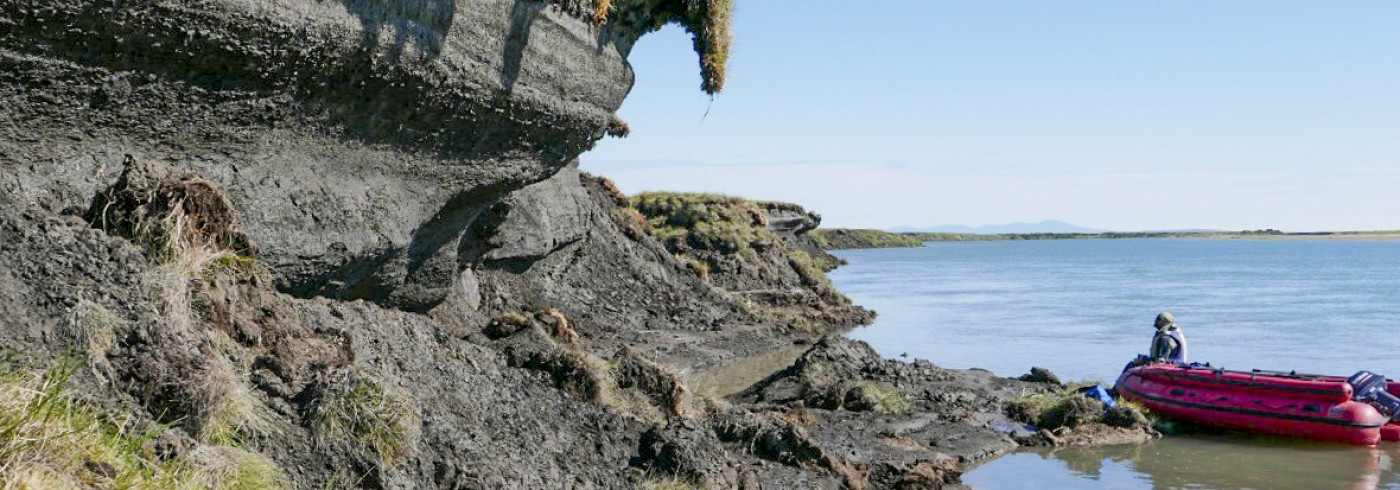What will happen to animals and plants in the Arctic when the climate changes?
3 July 2017 - 11 August 2017
The research group on Wrangels Island. Photo: Anders Angerbjörn

147 samples of prehistoric material were collected on Wrangel Island, many of the collected samples consisted of woolly mammoth tusks. Photo: Anders Angerbjörn

The scientists had similar sampling protocols on both sites. These protocols were based on sampling along 1 km transects with 5 sample stations placed 250 m apart. They managed to sample 6 transects on Wrangel Island and 7 transects in the Chaun Bay area. Photo: Anders Angerbjörn
The Arctic is characterised by a harsh climate, low population density, and relatively simple ecosystems. When the climate changes, both animals and plants are affected, among other things, many species moving further north, farther north of the tree limit. When these species start to propagate in new areas, it can bring about the loss of existing, less resistant species in the Arctic, only remaining on islands around the Arctic, which is believed to have happened during previous warm periods.
This summer, scientists worked on Wrangel Island and on the mainland by the Chaun River in the Northeast of Siberia, to study the composition of animal and plant species. The Wrangel Island and the Chaun River Delta are very satisfactory areas for studies. During the last ice age the areas were free from the ice sheet and therefore there are a lot of historic materials stored in the ground. Since the areas are covered with permafrost, bones, sediment, and other DNA-carrying materials are still frozen and in relatively good condition, despite being thousands of years old.

At each point, the scientist recorded the identity and height of each plant. They also inventory list of all plant species occurring within the 25 x 25 m square. Photo: Anders Angerbjörn

In total the scientist collected 500 plants in a herbarium and 450 tissue samples for DNA-analyses, 400 samples of insects and spiders were collected with the Malaise and pitfall traps and almost 200 samples of pellets and faeces from birds and mammals was collected to be used for analyses of diet. Photo: Anders Angerbjörn
On Wrangel Island, 147 samples of prehistoric materials were collected, a large part of the collected samples consist of tusks from woolly mammoths. For a million years, the woolly mammoths lived all over the Northern Hemisphere, but around 12,000 years ago almost all mammoths were extinct, except on a few isolated islands. On Wrangel Island the mammoths remained the longest and were still there until4,000 years ago. By studying prehistoric samples from Wrangel Island and the Chaun Delta, the scientists can find out what happened to the species after it was isolated. The samples are also helping to predict how species will be affected by temperature and climate changes, as well as when species become isolated and the habitat becomes fragmented.
In the Chaun Delta, several hundred samples were collected of plants, insects, tissue, pellets, faeces, and sediment. Through genetic analysis of the permafrost, the scientists can determine how the ecosystem has changed in relation to the changing prerequisites over the millennia. By comparing the ecosystems on the Arctic islands with corresponding locations on the mainland, the scientists can observe the islands’ significance for the survival of arctic species, and the biodiversity of the ecosystems, to better predict the consequences of current climate changes for the Arctic ecosystems.

